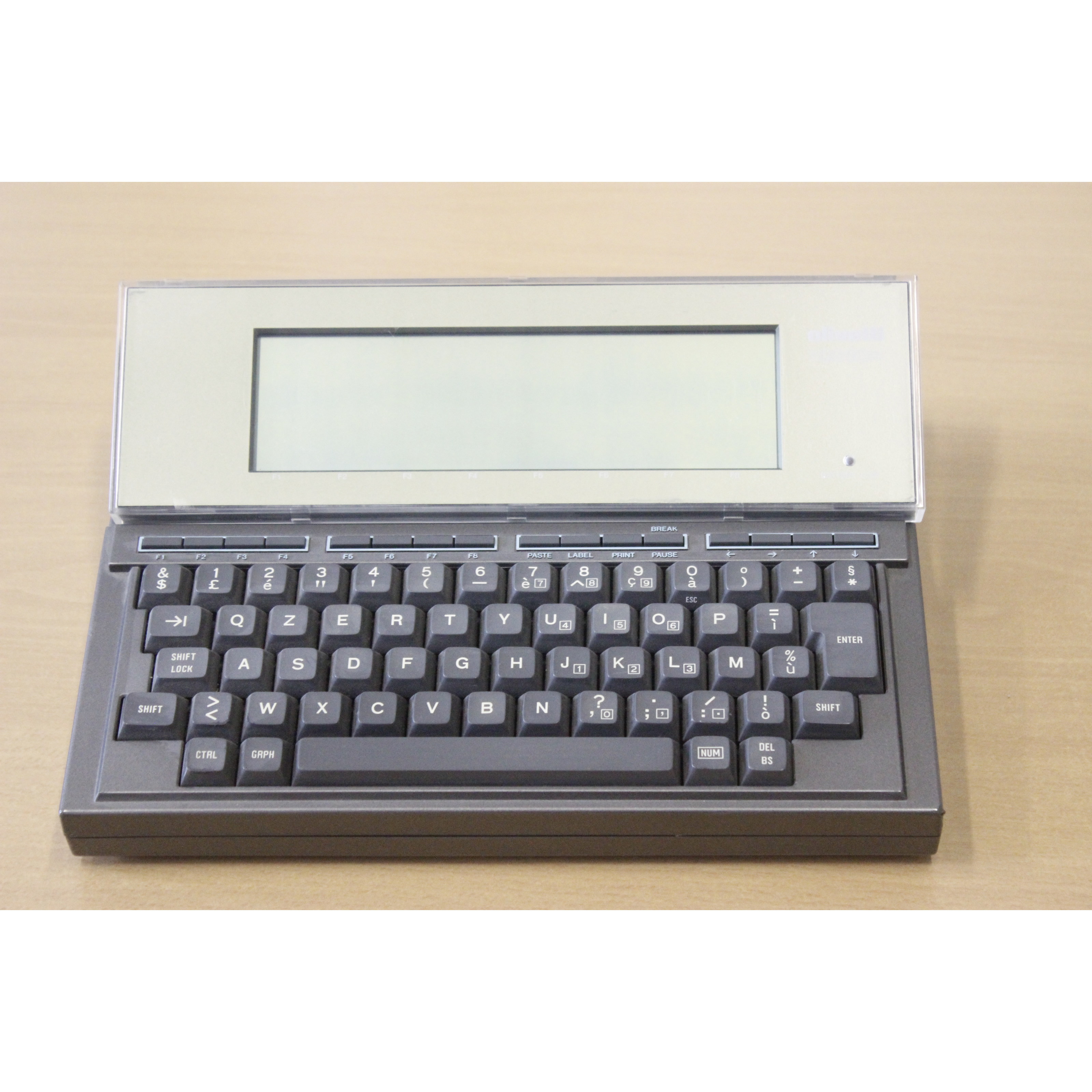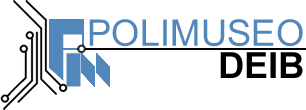
The Olivetti M10 is a portable computer produced in 1983. Together with the TRS-80 Model 100 from Tandy and the PC-8201 and PC-8300 from NEC, it is an authorized clone of the Kyotronic KC-85 model produced by the Japanese Kyoto Ceramic Co. Compared to the other clones, its screen was tiltable. An acoustic coupler Modem, a barcode reader, and a four-color printer were also available as accessories.
Insights - Fun facts
The Olivetti M10 contains the following built-in software:
BASIC: a subset of Microsoft BASIC version 1.0 directly produced by Microsoft, which also allowed to directly rename or delete files and to change the system’s time and date, as those features were not accessible from the system software. This software was also the last application developed personally by Bill Gates, Co-founder and CEO of Microsoft until 2000.
TEXT: word processor with copy/paste functionalities.
TELCOM: telecommunications (with the use of an acoustic coupler) or data interchange software.
ADDRS: an address book for addresses and phone numbers.
SCHEDL: a personal organizer for appointments.
The persistence of the data was guaranteed by providing power to the RAM memory using 4 AA batteries even when the computer was turned off. Alternatively, it was possible to store the data on tape by connecting a cassette recorder to the computer (a very common feature in the home computers of the time). Additional programs could be loaded by introducing a particular CHIP ROM into an external slot.
The Olivetti M10 suffers from the Millenium Bug: in fact only the last two digits are used to store the year, and consequently it is not possible to enter dates after the year 2000.
Technical Data Sheet
Name of the asset: Olivetti M10
Category: Portable computer
Manufacturer: Olivetti
Country of production: Italy
Year of production: 1983
Processor: OKI 80C85 CMOS a 3 MHz
Memory Unit: internal ROM with operating system and keyboard controller. Additional ROM 32k for
additional software loading. RAM 8k expandable to 32k, necessary for the development of BASIC programs and for keeping data and documents
Display: monochromatic non-backlit LCD, 8 lines for 40 characters text - 240 × 64 points
Ports: 25-pin RS232C serial, 26-pin CENTRONICS parallel (non-standard), DIN
format recorder, BCR for barcode reader connection
Other: Professional keyboard with 8 function keys and cursor keys. Available in both Italian and
American versions.
Battery: 4 pile da 1.5V AA






